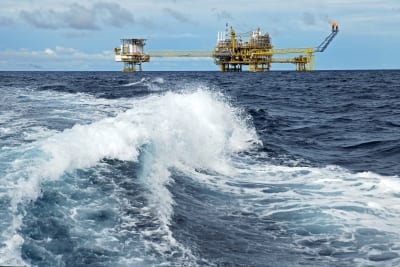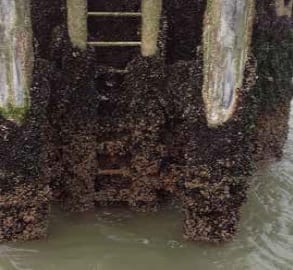 Life expectancy for offshore oil and gas platforms as well as for offshore wind turbine installations is more than 20 years. Thus, corrosion protection plays an important role. Apart from the durability of the corrosion protection, maintenance should also be as little as possible during the planned operating period, since any type of repair offshore is very expensive.
Life expectancy for offshore oil and gas platforms as well as for offshore wind turbine installations is more than 20 years. Thus, corrosion protection plays an important role. Apart from the durability of the corrosion protection, maintenance should also be as little as possible during the planned operating period, since any type of repair offshore is very expensive.
Cathodic protection is very effective in zones of structures that are permanently immersed in water. But it is largely ineffective in transition and splash zones as the metal is not continuously in contact with seawater. Normally, steel components here are protected with polyurethane or epoxy resin-based coating systems that have a life of roughly 15 years. One thing that these systems have in common is that they have to be repaired and partially renewed regularly to achieve their designed life time.

Areas of mechanical damages and heavy fouling on conventional coating systems on the transition piece and boatlanding station in the splash and tidal zone. Source: KME Germany
Another method of corrosion protection was first tried out successfully in 1949 in the Gulf of Mexico. It involves sheathing the steel supports with alloys containing nickel and copper. In the first installations, alloys containing high levels of nickel were used. One of the first large projects in which CuNi 90/10 was used as corrosion protection in tidal and splash zones was in 1984 on the columns of the platforms in the Morecambe Bay Gas Field, a large gas deposit in the Irish Sea.
Regular inspections have found no indication of corrosion on the steel or on the 90/10 copper-nickel cladding. No repairs in the zone protected by the 90/10 copper-nickel were necessary, since mechanical damage to the corrosion protection, such as may occur in service which conventional coatings were prevented by the robust nature of the copper-nickel plates.
Thanks to the absence of the need for a corrosion coating on the steel columns in the transition and splash zones, and the lack of repairs or maintenance of any kind required in this area, the cladding of offshore load-bearing structures with 90/10 copper-nickel plate has been demonstrated to be a more durable and economic alternative than conventional protection methods.
For more information visit: www.marine-applications.com
Featured Image: think4photop / FreeDigitalPhotos.net

















